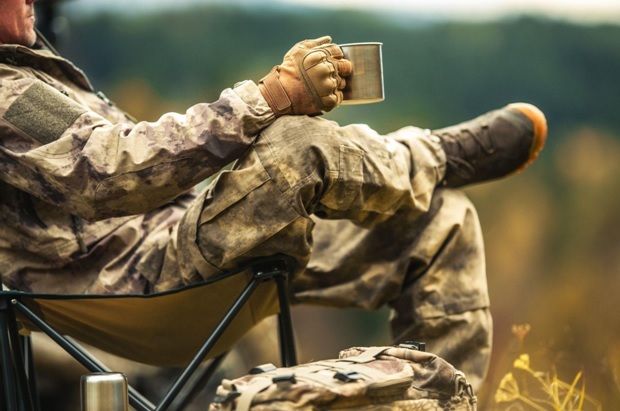All of the Important Ways to Assess a Pair of Camouflage Pants
Posted by: Fatigues Army Navy Outdoor Gea on 5th Nov 2024
You got your jacket, shirt, gloves, hat, and boots picked out and the camouflage pattern is all in agreement. You’re ready to hit the woods.
What’s missing? Your camouflage pants, naturally.
For some reason, sportsmen just tend to overlook their pants. The reason why is beyond us, since your pants are not only necessary for concealment, but are every ounce as important for protection and comfort as your jacket will be.
Do you need to go out and drop a thousand on your camouflage pants? Not by any stretch. But you should still know what to look for.
This guide should help.
Camouflage Pattern
Whether you’re a Mossy Oak Bottomland traditionalist, prefer the classic look of RealTree EDGE, or love the ultra-modern look of Kryptek patterns, it is critical that your pants not only align with the backdrop, but with the rest of your gear.
It is actually a misconception that you need to wear one single camo pattern on all of your gear. You’re trying to stay hidden here, not win a fashion contest. Most critters (and human eyes, for that matter) won’t be able to see a pair of US Woodland pants clashing with a Tiger Stripe camo top.
But, the patterns must agree with each other in terms of general palette as well as pattern type and density.
For instance, MultiCam will disappear next to a tan-heavy camo like Desert Battle Dress. But you can’t wear a green-heavy camo like Mossy Oak Obsession against a predominantly brown pattern like Shadow Blades.
You see what we mean? They have to agree with each other.
Now that we have that out of the way, let’s get to something more important.
Material
This is probably the most important thing you need to shop for, even more than the camouflage pattern. The fabric from which your pants are made will dictate both comfort and protection.
Heavy cotton duck canvas is probably the best material for camouflage pants, if you will use them on drives. Canvas is tough and hard to rip and will protect your legs from thorns and briars. That’s an important note: upland hunters will get shredded pushing through brush. Consider a heavy cotton fabric, such as 8 ounce or heavier.
Wool is acceptable for stand hunts, as wool is the best insulator out there and retains some of its insulative properties even when wet.
For other applications, blends like NyCo (nylon and cotton) or poly-cotton (polyester and cotton) are lightweight, which makes them acceptable in hotter weather. Another type of fabric to be on the lookout for is ripstop fabric, which has a special weave that helps prevent tears from traveling. It’s usually pretty light, though, so it’s not much protection from thorns.
Reinforced Areas
You’ll also want to look for pants that have special reinforced areas, especially if you will use the pants for upland hunting, which can be extremely unforgiving. Two important areas are around the knees and at the seat of the pants.
However, the entire front of the pants should be reinforced if possible as this will afford you the greatest degree of protection against brambles, thorns, and other impediments.
Insulation
Depending on the season you hunt, insulation is critical in a pair of camouflage pants, just as it is in a jacket.
Earlier in the season, you might want a lighter pair of ripstop pants that are breathable and which lack supplementary insulation. These will keep you cool and dry in the hotter, earlier seasons of the fall.
But later in the fall and into the winter, when the temperatures in the field can be punishingly cold, it’s more important to be prepared with a pair of camouflage pants that are appropriately rated to the environment.
Again, wool is good here because it offers excellent protection against the cold, even when wet, which is something that other popular materials, like cotton, polyester and nylon cannot offer.
Waterproofing
In pretty much all cases, your camouflage pants should be waterproof, assuming you are going to wear them while hunting.
This is because even in the spring and summer - in fact, especially in the spring and summer, which are the wettest seasons of the year - even hot, dry days will start off extremely wet.
The dew is thick in the spring and summer and wading through knee high grass will soak you to the bone unless your pants are waterproof. Plus, there’s little worse than being hot and wet, and cotton won’t dry on its own.
With that said, having waterproof pants is an important safeguard anyway. Just make sure your pants are waterproof and you’ll be good to go.

Quiet Features
Depending on what you’ll be hunting for, it may be important to get pants that are designed for silence.
For instance, if you hunt turkeys, predators, or deer, you’ll want pants with silent features - like no Velcro or zippers, and quiet fabrics like Tricot, so you can stay silent even if you need to move in your stand.
All else being equal, a silent pair of pants is best. But this is not a dealbreaker by any means.
Storage Considerations
Lastly, you’ll want to make sure the pants you buy will have enough pockets and other storage features for your critical gear.
Granted, much of your gear will probably be stored in your pack, or in a vest, or even in your jacket, but you will still want the assurance that your hunting pants have some room for gear.
Some hunting pants are even cargo pants and have additional pockets on the legs, not just in the front and at the seat of the pants.
Shop Camouflage Pants Here
Ready for a couple new pairs of camouflage pants for the upcoming seasons? Get whatever you’re looking for here. Take a look through our collection of pants - many popular camouflage patterns are well-represented, along with many different styles of pants for different hunting seasons, pursuits and disciplines.

